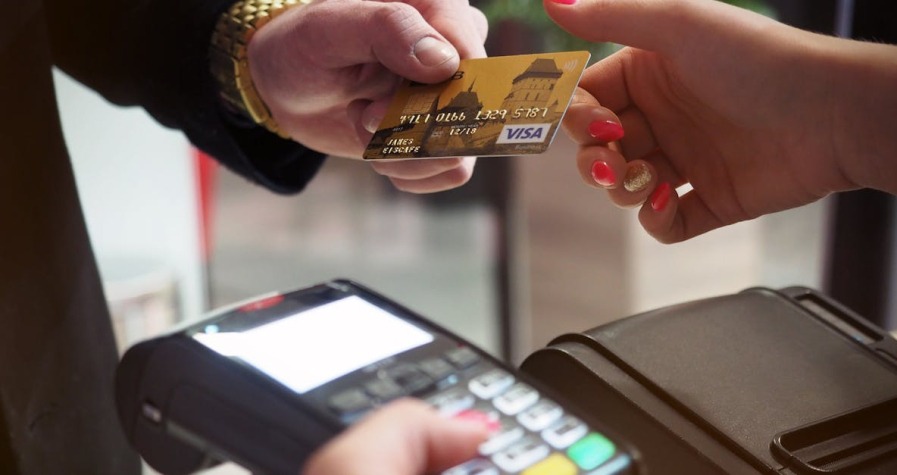You’ve probably heard about cryptocurrency countless times in the news, from friends, or across social media platforms. Perhaps you’ve wondered what all the fuss is about or felt overwhelmed by the technical jargon surrounding Bitcoin, Ethereum, and other digital currencies.
Cryptocurrency represents a revolutionary form of digital money that’s transforming how we think about finance and transactions. Unlike traditional currencies controlled by banks and governments, cryptocurrencies operate on decentralised networks using blockchain technology. This means you can send money directly to anyone worldwide without needing a middleman.
Whether you’re curious about investing, interested in the technology, or simply want to understand what everyone’s talking about, you’ll discover that cryptocurrency isn’t as complicated as it might seem. This beginner’s guide breaks down everything you need to know in simple terms, helping you navigate this exciting digital landscape with confidence.
What Is Cryptocurrency?
Cryptocurrency represents a form of digital money that exists entirely in electronic form and operates independently of traditional banking systems. You can think of it as virtual currency that uses advanced cryptographic techniques to secure transactions and control the creation of new units.
Digital Currency Explained
Digital currency operates through computer networks rather than physical forms like coins or banknotes. Unlike your traditional bank account balance that’s simply a number in a bank’s database, cryptocurrency exists on a decentralised network called blockchain. This network consists of thousands of computers worldwide that maintain identical records of all transactions.
Each cryptocurrency transaction gets verified through complex mathematical algorithms that ensure authenticity and prevent fraud. When you send cryptocurrency to another person, the network validates the transaction and permanently records it across all participating computers. This process eliminates the possibility of double-spending or counterfeiting.
The most recognisable cryptocurrencies include Bitcoin, Ethereum, and Litecoin, with over 10,000 different types currently in circulation. Each cryptocurrency operates on its own set of rules and serves specific purposes within its respective network.
How Cryptocurrency Differs from Traditional Money
Traditional money relies on central authorities such as banks and governments to manage transactions and maintain value. Your bank processes payments, stores your money, and charges fees for various services. Cryptocurrency operates without these intermediaries, allowing direct peer-to-peer transactions.
Fiat currency derives its value from government backing and legal tender status. Cryptocurrency’s value comes from market demand, utility, and the trust users place in the underlying technology. This fundamental difference means cryptocurrency prices can fluctuate significantly compared to traditional currencies.
Transaction speed varies dramatically between the two systems. Bank transfers can take 1-5 business days for completion, whilst cryptocurrency transactions typically process within minutes or hours. International cryptocurrency transfers cost significantly less than traditional wire transfers, which often include fees ranging from £15-50 per transaction.
Your traditional bank account operates during business hours and may restrict certain transactions. Cryptocurrency networks function continuously, allowing you to send or receive payments at any time without geographical limitations or banking holidays affecting the process.
How Does Cryptocurrency Work?
Cryptocurrency operates through a sophisticated yet straightforward process that combines cryptography, decentralised networks, and blockchain technology. Understanding this process demystifies how your digital transactions occur without traditional banking intermediaries.
Blockchain Technology Basics
Blockchain technology serves as the foundation for all cryptocurrency operations, functioning as a distributed ledger that records every transaction across a network of computers. Each block contains a collection of verified transactions and connects to the previous block through cryptographic links, creating an unbreakable chain of data.
You’ll find that blockchain’s decentralised structure eliminates the need for central banking authorities or intermediaries. This distributed network spans across thousands of nodes (computers) worldwide, each maintaining an identical copy of the transaction ledger. When you initiate a cryptocurrency transaction, the network broadcasts this information to all participating nodes simultaneously.
The transparency of blockchain technology means you can verify any transaction that’s ever occurred on the network. Each transaction receives a unique cryptographic signature, making it virtually impossible to counterfeit or alter historical records. This immutable nature ensures that once a transaction enters the blockchain, it becomes permanently recorded and publicly verifiable.
Mining and Validation Process
Mining represents the backbone of cryptocurrency security, involving specialised computers that validate new transactions and add them to the blockchain. When you send cryptocurrency to another user, miners compete to verify the legitimacy of your transaction through complex mathematical puzzles.
The mining process begins when nodes receive your transaction and group it with other pending transactions into a potential block. Miners then use powerful hardware, typically GPUs or specialised ASIC machines, to solve cryptographic puzzles that validate the entire block’s contents. The first miner to solve the puzzle successfully adds the block to the blockchain and receives a cryptocurrency reward.
This competitive validation system prevents double spending and maintains network security. Each validated block references the previous block’s unique identifier, creating an interconnected chain that becomes increasingly difficult to manipulate as more blocks are added. The computational power required for mining ensures that altering historical transactions would demand enormous resources, making fraud economically unfeasible.
The reward system incentivises miners to maintain network security and process transactions efficiently. These rewards consist of newly minted cryptocurrency tokens plus transaction fees paid by users, creating a self-sustaining ecosystem that operates without centralised oversight.
Types of Cryptocurrency
The cryptocurrency market encompasses thousands of different digital assets, each designed with specific features and purposes. Understanding the main categories helps you navigate this diverse landscape more effectively.
Bitcoin: The First Cryptocurrency
Bitcoin launched in 2009 as the world’s first cryptocurrency, establishing the foundation for the entire digital currency ecosystem. Created by the pseudonymous Satoshi Nakamoto, Bitcoin introduced blockchain technology and demonstrated that peer-to-peer digital transactions could operate without traditional financial intermediaries.
You’ll find Bitcoin remains the most recognised and widely adopted cryptocurrency, often serving as the benchmark against which other digital assets are measured. Its design incorporates a fixed supply limit of 21 million coins, creating scarcity that contributes to its value proposition. Bitcoin’s primary function focuses on serving as a decentralised store of value and medium of exchange.
The cryptocurrency operates on a proof-of-work consensus mechanism, where miners compete to validate transactions and secure the network. Bitcoin transactions typically take 10 minutes to process, with fees varying based on network congestion. Its established infrastructure includes widespread exchange support, merchant adoption, and regulatory recognition in many jurisdictions.
Altcoins and Their Purpose
Altcoins represent all cryptocurrencies other than Bitcoin, developed to address perceived limitations or introduce new functionalities beyond Bitcoin’s scope. These alternative coins expand the cryptocurrency ecosystem by offering diverse use cases, improved transaction speeds, enhanced privacy features, or specialised platform capabilities.
Ethereum stands as the most prominent altcoin, introducing smart contract functionality that enables decentralised applications and programmable money. You can use Ethereum’s blockchain to execute complex agreements automatically without intermediaries, making it the foundation for decentralised finance (DeFi) and non-fungible tokens (NFTs).
Stablecoins like Tether (USDT) maintain price stability by pegging their value to traditional assets such as the US dollar. These cryptocurrencies reduce volatility concerns and facilitate trading between different digital assets whilst preserving value during market fluctuations.
Exchange tokens such as Binance Coin (BNB) provide utility within specific cryptocurrency trading platforms, offering reduced fees and exclusive features for users. Payment-focused altcoins like XRP aim to improve cross-border transaction speed and reduce costs compared to traditional banking systems.
Privacy coins enhance transaction anonymity beyond Bitcoin’s pseudonymous nature, whilst governance tokens enable holders to participate in protocol decision-making processes. Each altcoin category addresses specific market needs, creating a comprehensive ecosystem that extends far beyond Bitcoin’s original vision.
How to Buy and Store Cryptocurrency
Purchasing and storing cryptocurrency involves selecting the right platforms and implementing proper security measures to protect your digital assets. Understanding these fundamental processes enables you to enter the cryptocurrency market safely and efficiently.
Cryptocurrency Exchanges
Cryptocurrency exchanges serve as digital marketplaces where you can buy, sell, and trade cryptocurrencies using traditional currency or other digital assets. You’ll encounter two primary types of platforms when entering the cryptocurrency market.
Brokerage services simplify the purchasing process by buying cryptocurrencies on your behalf, making them ideal for beginners who want straightforward transactions. These platforms typically offer limited cryptocurrency options but provide user-friendly interfaces and customer support.
Cryptocurrency Exchanges offer comprehensive trading features including advanced order types, multiple cryptocurrency pairs, and integrated wallet services. Popular exchanges include Coinbase, Binance, and Kraken, each providing different fee structures and available cryptocurrencies.
Account creation requires completing Know Your Customer (KYC) procedures, which involve providing identification documents and address verification. This process ensures regulatory compliance and platform security.
Funding options vary across exchanges, with bank transfers offering lower fees but slower processing times compared to credit or debit card payments. Some platforms accept payment services like PayPal for added convenience.
Exchange selection criteria include transaction fees, security protocols, available payment methods, customer support quality, and the range of supported cryptocurrencies. Compare these factors before choosing your preferred platform.
Digital Wallets and Security
Digital wallets store your cryptocurrency holdings through cryptographic keys that prove ownership of specific blockchain addresses. Proper wallet selection and security practices protect your digital assets from theft and loss.
Hot wallets remain connected to the internet, allowing easy access through computer applications or mobile apps. While convenient for frequent trading, these wallets face higher security risks due to their online exposure.
Cold wallets operate offline through hardware devices resembling USB drives, providing superior security by isolating your cryptocurrency from internet-based threats. Hardware wallets like Ledger and Trezor offer the highest protection level for long-term storage.
Security best practices include transferring cryptocurrencies from exchanges to personal wallets immediately after purchase. Enable two-factor authentication (2FA) on all accounts and use platforms with robust security measures.
Private key management represents the most critical security aspect, as your private keys or seed phrases provide complete access to your cryptocurrency. Store these credentials offline in multiple secure locations and never share them with anyone.
Backup procedures involve writing down your wallet’s recovery phrase on paper and storing it in a safe location separate from your hardware wallet. This backup enables wallet recovery if your device becomes lost or damaged.
Benefits and Risks of Cryptocurrency
Understanding cryptocurrency’s advantages and risks helps you make informed decisions about digital asset investment and usage. This balanced perspective reveals both the revolutionary potential and genuine concerns surrounding digital currencies.
Advantages of Digital Currency
Decentralised control eliminates reliance on traditional banks and governments since transactions occur directly on blockchain networks. You gain financial autonomy without intermediaries controlling your money transfers or account access.
Lower transaction fees make cryptocurrency transfers more economical than conventional payment systems, particularly for international transactions. Cross-border payments that typically cost £15-50 through banks often require less than £2 in cryptocurrency fees.
Enhanced security and privacy protect your financial information through cryptographic encryption and virtual wallet systems. Your transaction details remain pseudonymous rather than directly linked to your personal identity like traditional banking records.
24/7 accessibility enables you to send and receive payments at any time without banking hour restrictions or weekend delays. Cryptocurrency networks operate continuously across all time zones and geographical boundaries.
Financial inclusion opportunities provide banking services to unbanked populations who lack access to traditional financial institutions. You can participate in the global economy with only internet access and a smartphone.
Investment potential offers significant returns through popular cryptocurrencies like Bitcoin and Ethereum, which have demonstrated substantial growth over time. Early Bitcoin investors who purchased at £100 per coin witnessed values exceeding £50,000 during peak periods.
Potential Risks and Considerations
Price volatility creates substantial financial uncertainty as cryptocurrency values fluctuate rapidly and unpredictably. Bitcoin’s price has experienced daily swings of 10-20%, potentially resulting in significant portfolio losses within hours.
Security vulnerabilities expose your digital assets to hacking attempts and permanent loss if digital wallets are compromised or private keys are misplaced. Unlike traditional banking, cryptocurrency losses are typically irreversible and unrecoverable.
Lack of insurance protection means your cryptocurrency holdings aren’t covered by government deposit insurance schemes that protect traditional bank accounts up to £85,000 in the UK. Lost or stolen digital assets cannot be recovered through insurance claims.
Regulatory uncertainty creates legal risks as government policies towards cryptocurrency continue evolving and vary significantly between jurisdictions. Sudden regulatory changes can impact cryptocurrency values and trading accessibility.
Technical complexity requires understanding wallet management, exchange operations, and secure storage practices to avoid costly mistakes. New users often struggle with concepts like private keys, transaction confirmations, and backup procedures that are essential for safe cryptocurrency use.
Cryptocurrency in Everyday Life
You can use cryptocurrency for practical transactions beyond investment purposes, with growing adoption across various sectors. Digital currencies enable direct peer-to-peer payments without traditional banking intermediaries, creating new possibilities for everyday financial activities.
Real-World Uses and Adoption
Online purchases form the primary use case for cryptocurrency in daily transactions. You’ll find participating merchants accepting Bitcoin, Ethereum, and other digital assets for products ranging from electronics to clothing. Major e-commerce platforms and independent retailers increasingly integrate cryptocurrency payment gateways, allowing you to complete purchases using your digital wallet.
Cross-border payments represent a significant advantage of cryptocurrency usage. You can send funds internationally without traditional banking delays or high transfer fees, with transactions typically completing within minutes rather than days. This capability proves particularly valuable for remittances, freelance payments, and international business transactions.
Investment and trading activities constitute another common application for cryptocurrency users. You can diversify your portfolio by purchasing various digital assets, participating in staking programmes, or engaging in active trading across multiple exchanges. Many investors use cryptocurrency as a hedge against inflation or traditional market volatility.
Decentralised finance (DeFi) platforms offer sophisticated financial services using cryptocurrency. You can lend your digital assets to earn interest, borrow against your holdings, or participate in liquidity pools for yield farming. These platforms operate without traditional banks, providing financial services through smart contracts.
Non-fungible tokens (NFTs) create unique ownership opportunities in digital art, collectibles, and virtual assets. You can purchase, trade, or create NFTs using cryptocurrency, participating in digital ownership markets that didn’t exist with traditional payment methods.
UK businesses demonstrate increasing cryptocurrency adoption rates. Large retailers and service providers now accept digital payments, signalling mainstream integration into commercial activities. However, widespread acceptance remains limited compared to traditional payment methods, with price volatility affecting cryptocurrency’s function as a stable payment medium.
Future of Digital Payments
Central bank digital currencies (CBDCs) represent the next evolution in digital payment systems. You’ll likely encounter government-issued digital currencies that combine cryptocurrency technology with regulatory oversight, providing the benefits of digital money whilst maintaining traditional monetary policy controls.
Mainstream financial integration continues advancing through institutional adoption and regulatory developments. You can expect greater cryptocurrency integration into existing banking systems, with traditional financial institutions offering digital asset services alongside conventional products.
Security advancements drive increased cryptocurrency adoption for everyday payments. Enhanced wallet technologies, improved exchange security, and simplified user interfaces make digital currency more accessible for general consumers. These developments reduce technical barriers that previously limited mainstream adoption.
Payment infrastructure improvements streamline cryptocurrency transactions for daily use. You’ll benefit from faster processing times, lower fees, and more intuitive payment interfaces as blockchain technology evolves. Lightning networks and layer-2 solutions already demonstrate significant improvements in transaction speed and cost-effectiveness.
Global financial inclusion expands through cryptocurrency accessibility. Digital currencies provide financial services to unbanked populations worldwide, enabling participation in the global economy without traditional banking infrastructure requirements.
The trajectory towards widespread cryptocurrency adoption in daily payments appears promising despite current limitations. Price stability improvements, regulatory clarity, and technological advancements collectively drive increased integration into mainstream financial systems.
Getting Started with Cryptocurrency
Getting started with cryptocurrency requires systematic preparation and careful platform selection. You’ll find the entry process straightforward when you follow established steps and choose reputable services.
Choosing a Cryptocurrency Exchange
Selecting the right cryptocurrency exchange forms the foundation of your digital asset journey. Licensed exchanges provide regulatory compliance and enhanced security measures that protect your investments. Look for platforms that support fiat currency deposits through bank transfers, credit cards, or debit cards to streamline your initial funding process.
Reputable exchanges display clear fee structures, robust security protocols, and responsive customer support. Research platforms such as Coinbase, Binance, or Kraken, which offer beginner-friendly interfaces whilst maintaining professional trading capabilities. Verify that your chosen exchange operates legally in the UK and maintains proper regulatory authorisation.
Account Creation and Verification
Creating your cryptocurrency exchange account involves identity verification procedures known as Know Your Customer (KYC) requirements. You’ll submit government-issued identification documents such as your passport or driving licence alongside proof of address documentation like recent utility bills or bank statements.
Complete the verification process promptly to unlock full platform functionality and higher transaction limits. Most exchanges process verification within 24-48 hours, though complex cases may require additional documentation or extended review periods.
Funding Your Account
Depositing funds into your exchange account offers multiple payment methods with varying processing times and fee structures:
| Payment Method | Processing Time | Typical Fees | Best For |
|---|---|---|---|
| Bank Transfer | 2-5 business days | Low (0.5-1%) | Large deposits |
| Debit Card | Instant | Medium (3-4%) | Quick purchases |
| Credit Card | Instant | High (3-5%) | Immediate access |
| PayPal | Instant | Medium (2-3%) | Convenience |
Bank transfers provide the most cost-effective funding method for substantial investments, whilst card payments offer immediate access at higher fees. Consider your investment timeline when selecting funding methods.
Making Your First Purchase
Begin your cryptocurrency journey with established digital assets like Bitcoin or Ethereum, which offer widespread acceptance and proven track records. These cryptocurrencies provide liquidity advantages and educational resources that benefit newcomers to the market.
Start with small amounts to familiarise yourself with the buying process and platform interface. Purchase cryptocurrency using market orders for immediate execution or limit orders to buy at specific price points. Monitor transaction confirmations on the blockchain to understand settlement processes.
Securing Your Investment
Transfer your cryptocurrency from the exchange to a personal wallet after purchase to enhance security. Exchange platforms face hacking risks and operational vulnerabilities that personal wallets can mitigate. Cold storage wallets, which remain offline, provide maximum security for long-term holdings.
Enable two-factor authentication on all cryptocurrency accounts and create secure backup copies of your wallet recovery phrases. Store these backup phrases in physically separate locations to prevent total loss from single-point failures.
Consider dollar-cost averaging for ongoing purchases, which involves buying fixed amounts at regular intervals regardless of price fluctuations. This strategy reduces the impact of market volatility on your average purchase price whilst building your cryptocurrency portfolio systematically.
Conclusion
You’re now equipped with the foundational knowledge to understand cryptocurrency’s role in the modern financial landscape. From grasping blockchain technology to learning about different types of digital assets you’ve covered the essential concepts that’ll help you navigate this space confidently.
The cryptocurrency ecosystem continues to evolve rapidly with new opportunities emerging across various sectors. Whether you’re considering it as an investment vehicle exploring DeFi platforms or simply staying informed about digital payment innovations you’ve got the tools to make educated decisions.
Remember that successful cryptocurrency involvement starts with proper research security practices and gradual exposure to the market. Take your time choose reputable platforms and never invest more than you can afford to lose as you explore this exciting digital frontier.
Frequently Asked Questions
What is cryptocurrency?
Cryptocurrency is a revolutionary form of digital money that operates on decentralised networks using blockchain technology. Unlike traditional currency, it exists entirely in electronic form and allows direct peer-to-peer transactions without intermediaries like banks. The most recognisable examples include Bitcoin, Ethereum, and Litecoin, each with unique features and purposes.
How does cryptocurrency work?
Cryptocurrency operates through a combination of cryptography, decentralised networks, and blockchain technology. Transactions are recorded on a distributed ledger across multiple computers, verified through cryptographic signatures, and validated by miners who solve complex mathematical puzzles. This process ensures security, transparency, and prevents double spending without requiring centralised oversight.
What are the main types of cryptocurrency?
The cryptocurrency market includes Bitcoin, the first and most recognised digital currency, and altcoins, which represent all other cryptocurrencies. Altcoins include various categories such as Ethereum (enabling smart contracts), stablecoins (price-stable currencies), exchange tokens, privacy coins, and governance tokens. Each type serves specific purposes within the digital asset ecosystem.
How do I buy and store cryptocurrency?
To buy cryptocurrency, select a reputable exchange, create an account with identity verification, and fund it through bank transfers or cards. Purchase established cryptocurrencies like Bitcoin or Ethereum for beginners. Store your assets in digital wallets – hot wallets (online) for convenience or cold wallets (offline) for enhanced security.
What are the benefits and risks of cryptocurrency?
Benefits include decentralised control, lower transaction fees, enhanced privacy, 24/7 accessibility, financial inclusion, and investment potential. However, risks encompass price volatility, security vulnerabilities, lack of insurance protection, regulatory uncertainty, and technical complexity. A balanced understanding of both aspects is crucial for informed decision-making.
Where can I use cryptocurrency?
Cryptocurrency can be used for online purchases from merchants accepting digital payments, cross-border transactions, investment and trading, decentralised finance (DeFi) services, and purchasing NFTs. While UK business adoption is growing, widespread acceptance remains limited compared to traditional payment methods, though integration is expanding rapidly.
How should beginners start with cryptocurrency?
Beginners should start by choosing a regulated exchange, completing account verification, and making small initial purchases with established cryptocurrencies. Implement security measures like two-factor authentication, transfer assets to personal wallets, and consider dollar-cost averaging for ongoing investments to mitigate market volatility impacts.









